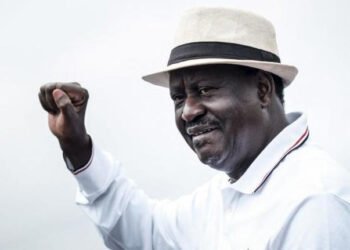Fitch has projected that the Banco Nacional de Angola (BNA) will reduce its policy rate by 200 basis points (bps) to 18 per cent in 2022.
At its first policy meeting for the year, the Banco Nacional de Angola (BNA) held its key policy rate at 20 per cent for the second consecutive time. Policymakers cited the need to observe the impact of tax relief on certain food items in January 2022, the potential easing of global food prices easing and the increase in global oil prices as reasons for holding the interest rate.
“We believe that a stronger kwanza and slower inflation will allow the BNA to shift its focus from curbing inflation to stimulating the economy in 2022, which has been in recession since 2016.”
Fitch
According to Fitch, the country’s relatively weak economic growth will encourage the Central Bank to provide a monetary stimulus to strengthen the economy. Statistics reveal that Angola’s real GDP only increased by 0.8 per cent year-on-year in Q3 2021, from a 0.2 per cent contraction in Q2 2021.
While previous expectations of GDP growth were shown to be stronger in Q4 2021 on the back of looser Covid-19 restrictions, Fitch estimated that the economy only grew by 0.6 per cent in 2021.
As a consequence, Fitch expects that the central bank will cut its policy rate to accelerate the pace of the economic recovery (forecast real GDP growth of 2.7 per cent in 2022) from the multi-year contraction of 2.3 per cent over 2016-2020.

Meanwhile, Fitch has indicated that a stronger kwanza will offer room for the BNA to cut its policy rate. Although forecasts showed that the US Federal Reserve will hike its fed funds rate three times by a cumulative 75bps to 0.75 per cent in 2022, Fitch expects that the kwanza will appreciate by 15.1 per cent to an average of AOA514.39/USD in 2022.
Limited Inflation Pressures
This will be on the back of tailwinds to the domestic oil industry such as higher oil production and higher global average oil prices. Fitch expects that domestic production will increase from an estimate of 1.26 million in 2021 to 1.31 million in 2022, while global Brent oil prices will increase from an average of USD71.0/bbl in 2021 to USD76.0/bbl in 2022.
This will boost Angola’s exports, supporting the value of the kwanza and offsetting the impact of the US fed funds hike. Because of a stronger unit, we believe that there will also be limited imported price pressures in 2022.
Furthermore, Fitch indicated that there is the likelihood for limited inflationary pressures in 2022, allowing more room for the Central Bank to loosen its policy rate. While inflation accelerated from 26.98 per cent year-on-year in November 2021 to 27.03 per cent in December 2021, Fitch expects that price growth will decelerate from an average of 25.7% in 2021 to 20.0% in 2022.
Angolans who fled to neighbouring Namibia in 2021 over what was the worst drought since 1981, have been returning to Angola amid fresh rainfall since January 2022.
“We believe that as drought conditions subside over the year, this will improve food supply and help to moderate inflation. This, combined with a stronger kwanza will be enough to offset upward price pressures from improving consumer demand”.
Fitch
Fitch further highlighted the presence of upside risks to its interest rate forecast. But the hawkish stance of the US Federal Reserve could put more pressure on the Angolan Kwanza than currently anticipated, which could delay the loosening of Angola’s policy rate.
Meanwhile, as a result of climate change, there are risks of extreme weather conditions such as severe floods and droughts which could put more pressure on inflation over 2022 than Fitch currently expect, limiting the incentive to make interest rate cuts.
READ ALSO: Ghana: Debt Affordability Worsens, Gov’t Debt Ended 2021 at 80% of GDP- Moody’s






















